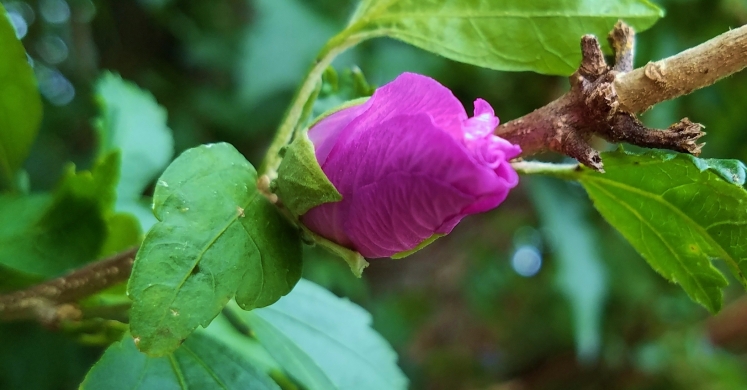Blog

#bioPGH Blog: Dozing Daisies - Exploring the Flowers that “Sleep” at Night
 A resource of Biophilia: Pittsburgh, #bioPGH is a weekly blog and social media series that aims to encourage both children and adults to reconnect with nature and enjoy what each of our distinctive seasons has to offer.
A resource of Biophilia: Pittsburgh, #bioPGH is a weekly blog and social media series that aims to encourage both children and adults to reconnect with nature and enjoy what each of our distinctive seasons has to offer.
Some lazy summer evenings, what sounds better than stretching out on a hammock under a dusky sky and falling asleep to the sound of crickets? Minus the hammock part, have you noticed that some flowers seem to be thinking the same thing, as they curl up for the night? Nyctinasty (“nic-ti-nasty”) is the process of the opening and closing of flowers and leaves according to a daily rhythm. Not all flowers do this, and it’s not always quite clear why those that do go through the effort. It might serve to protect the pollen of wide flowers from dew or rain, or to protect the flower from hungry herbivores - that question is an active research topic. But how exactly do flowers know when to close up for the night and when to open in the morning, and how do they actually “close”? These questions we can explore!
The process by which plants close their flowers at night and open them in the morning is a complex one, involving multiple steps. On top of that, nature often has many ways to accomplish a task, and nyctinasty across different families of flowers is no exception. As a broad summary, the process is generally a combination of factors such as daylight, plant hormones, and the activation or inactivation of different genes.
First, how do plants even know when to open and close their flowers? One answer is: daylight. Plants have a number of remarkable ways that they use and detect light beyond just photosynthesis. One structure particularly important for the maintenance of a circadian rhythm (internal daily clock) is a specialized plant protein called a phytochrome. When the phytochrome detects red wavelengths of light, it signals actions within plant cells—ultimately activating different genes. Since red light is most available during sunrise and sunset, it can be a gauge of time of day. Besides the phytochrome, there are other photoreceptor proteins that detect blue wavelengths of light. Ultimately, the ability to detect different wavelengths of light is one way of signaling to the plant that it is time to open or close flowers.
Another factor in this process is the presence or absence of different plant hormones. Many of us are aware of human hormones, but plants have them as well. Similar to humans, hormones impact the growth and many day-to-day functions of plants—including some aspects of nyctinasty. In particular, the hormones ethylene, gibberellic acid, abscisic acid, and auxin seem to play the largest roles in flower opening and closing (depending on plant family, of course). These hormones impact gene expression—in other words, these hormones impact whether or not a gene produces its product protein. Those product proteins then either inhibit or encourage flowers to open through a chain of molecular and cellular reactions. However, the exact mechanism behind how plant hormones know to open or close flowers is not clear. Plants’ concentrations of hormones are known to be linked to time of day, but the cause of that link is not yet perfectly mapped.
Now the final question—mechanically speaking, how are flowers opening and closing on a regular basis? One short answer: water pressure. To open and stay open, a flower must uptake water into its cells to increase the pressure within the petals, allowing them to stay open. Since plant cells have tough cellulose cell walls, they can handle quite a bit of water pressure from within (called turgor pressure), which is important! (Imagine wilty lettuce versus fresh, crisp lettuce.) This turgor pressure in the petals makes the major difference in a flower opening up. To ensure water ends up where it needs to be, some plants have complicated ways of changing the concentrations of sugars within and between the cells of the flowers to help facilitate the movement of water. In other plants, hormones activate genes that signal the production of water transport channels called aquaporins.
It’s mind-boggling to see how many processes and mechanisms are in place for something as simple as a flower opening and closing at different times of the day, but the natural world is quite the wonder. Keep learning and keep exploring!
Connecting to the Outdoors Tip: You can see many “sleeping” flowers right here in PA this time of year. Many members of the aster family close up at night, in addition to some introduced plants such as escaped ornamental hibiscus. You can also keep an eye out for the exact opposite—flowers that only bloom at night! The same mechanisms apply, but the plants respond differently to the same environmental cues.
Continue the Conversation: Share your nature discoveries with our community by posting to Twitter and Instagram with hashtag #bioPGH, and R.S.V.P. to attend our next Biophilia: Pittsburgh meeting.
Resources
Van Doorn and Kamdee 2013—Flower Opening and Closure: an update
Cortizo and Laufs et al. 2012— Genetic basis of the “sleeping leaves” revealed
Han et al. 2007—Phytochrome-mediated photomorphogenesis in plants
Photo Credits: Maria Wheeler-Dubas and Pexels CC0

